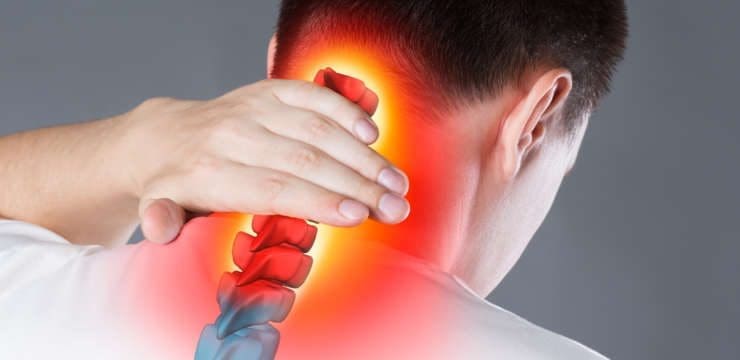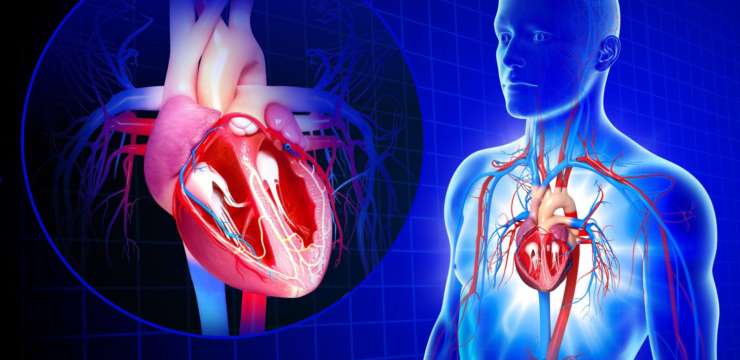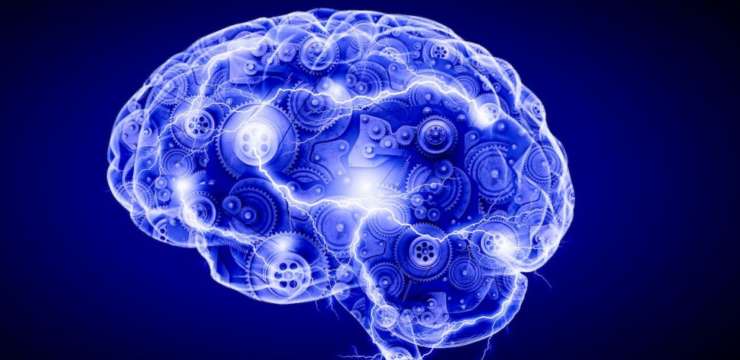
Find out the benefits of chiropractic care for managing musculoskeletal inflammation symptoms and promoting better health.
Table of Contents
Chiropractic Care for Joint and Muscle Pain: A Comprehensive Guide
Introduction
Imagine waking up with a stiff neck or aching joints that make every step feel like a chore. For millions, musculoskeletal disorders—conditions affecting bones, muscles, and joints—are a daily reality, often fueled by inflammation. Chiropractic care offers a promising, non-invasive solution to manage these issues, focusing on the spine and nervous system to promote overall well-being and healing. In this comprehensive guide, we’ll explore why chiropractic care can help with joint and muscle pain linked to inflammation, dive into the role of environmental factors in chronic inflammation, and highlight the expertise of Dr. Alexander Jimenez, a leading chiropractor in El Paso, Texas, known for his work with personal injury cases. We’ll also touch on related health topics, such as the gut microbiome, mitochondrial function, and nutrition, adding a touch of humor to keep things light, because who says health can’t be fun?
Understanding Musculoskeletal Disorders and Inflammation
Musculoskeletal disorders, such as arthritis, low back pain, and tendonitis, are among the leading causes of disability worldwide, causing pain, reduced mobility, and significant healthcare costs (Vasquez, 1996). Inflammation plays a central role in many of these conditions. When you injure a joint or muscle, your body triggers inflammation to protect and heal the area. However, chronic inflammation—often driven by environmental factors like poor diet, stress, or lack of exercise—can lead to ongoing pain and tissue damage.
For example, osteoarthritis (OA), a common musculoskeletal disorder, involves the breakdown of cartilage and inflammation in joints. Research shows that mitochondrial dysfunction in chondrocytes (cartilage cells) contributes to OA by increasing oxidative stress and inflammation (Blanco et al., 2011). Similarly, chronic low back pain is often linked to weakened muscles, like the gluteals, which can be addressed through targeted interventions (Bullock-Saxton et al., 1993). Chiropractic care aims to address these issues by improving joint alignment and reducing mechanical stress, which can potentially ease inflammation and pain.
Table 1: Common Musculoskeletal Disorders and Their Inflammatory Components
| Disorder | Description | Inflammatory Factors |
|---|---|---|
| Osteoarthritis | Cartilage degradation in joints, leading to pain and stiffness | Increased cytokines, oxidative stress, and mitochondrial dysfunction |
| Low Back Pain | Pain in the lumbar region, often due to muscle or joint dysfunction | Chronic inflammation from muscle imbalances, stress |
| Rheumatoid Arthritis | Autoimmune disorder causing joint inflammation and damage | Systemic inflammation, immune-mediated cytokine release |
| Tendonitis | Inflammation of tendons due to overuse or injury | Localized inflammation, repetitive stress |
Clinical Rationale for Chiropractic Care
Chiropractic care is grounded in the idea that proper spinal alignment enhances the body’s ability to heal itself. By correcting subluxations (misalignments in the spine), chiropractors aim to reduce nerve irritation, improve joint function, and decrease inflammation. Here’s how it works:
Spinal Adjustments and Inflammation
Spinal adjustments involve applying controlled force to specific joints to restore alignment. Research suggests that these adjustments can reduce pro-inflammatory cytokines, molecules that drive inflammation in the body (Teodorczyk-Injeyan et al., 2010). For instance, a study found that chiropractic manipulation lowered levels of interleukin-6, a key inflammatory marker, in patients with musculoskeletal pain. This reduction can help alleviate pain in conditions such as arthritis or back pain, where inflammation is a significant contributor.
Chiropractors also use adjunctive therapies to combat inflammation:
- Ultrasound: Sound waves massage soft tissues, reducing swelling and stiffness (Arthritis Foundation, 2021).
- Electrotherapy: Tiny electric pulses stimulate nerves and muscles, potentially easing inflammation (Arthritis Foundation, 2021).
- Low-Level Laser Therapy: Non-heat-producing lasers penetrate tissues, sometimes reducing inflammation (Arthritis Foundation, 2021).
- Exercises and Stretches: These restore joint stability and mobility, supporting long-term pain relief (Cleveland Clinic, 2023).
Enhancing Nervous System Function
The nervous system controls how the body responds to pain and inflammation. Misaligned joints can irritate nerves, amplifying pain signals and inflammation. By realigning the spine, chiropractic care may improve nervous system communication, promoting healing and reducing discomfort. For example, in chronic low back pain, activating the gluteal muscles through proprioceptive exercises (such as those studied with balance shoes) can enhance pelvic stability and reduce pain, a principle that chiropractors often incorporate into treatment plans (Bullock-Saxton et al., 1993).
Evidence and Limitations
Numerous studies support the effectiveness of chiropractic care for musculoskeletal pain. Dr. Jeremy Coffey, a chiropractor, notes that adjustments can decrease muscle spasms and increase range of motion, particularly for joint-related pain in the neck, back, hips, and shoulders (Western Reserve Hospital, n.d.). However, the field isn’t without controversy. Some medical professionals argue that chiropractors should avoid certain procedures, like needle electromyography, due to safety concerns (Texas Medical Association, 2006). While serious complications like stroke are rare, they’ve been reported with neck manipulations, highlighting the need for skilled practitioners (Harvard Health, 2021).
Environmental Factors and Chronic Inflammation
Chronic inflammation doesn’t just happen—it’s often fueled by environmental factors that we can influence. Let’s break down the key culprits and how they tie into musculoskeletal health.
Diet and Inflammation
What you eat can either fan the flames of inflammation or help douse them. Diets high in sugar and saturated fats can trigger systemic inflammation, exacerbating conditions such as osteoarthritis or back pain (Gómez-Pinilla, 2008). Conversely, foods rich in omega-3 fatty acids (such as fatty fish), antioxidants (found in leafy greens), and fiber can help reduce inflammation. For example, a study highlighted that nutrients like docosahexaenoic acid (DHA) support brain and body health, potentially lowering inflammation that affects joints (Gómez-Pinilla, 2008).
The gut microbiome also plays a role. An imbalanced microbiome (dysbiosis) can increase systemic inflammation, contributing to musculoskeletal disorders (Cryan et al., 2020). Chiropractors, such as Dr. Jimenez, often recommend dietary changes in conjunction with adjustments to address inflammation holistically.
Stress and Lifestyle
Chronic stress pumps cortisol into your system, which, over time, can promote inflammation and weaken muscles, exacerbating musculoskeletal pain (Sinaki et al., 2005). Sedentary lifestyles or poor posture can also strain joints and muscles, leading to inflammation. Chiropractic care can help reduce physical tension and improve posture, while lifestyle changes, such as regular exercise and stress management, complement these efforts.
Table 2: Environmental Factors Influencing Chronic Inflammation
| Factor | Impact on Inflammation | Chiropractic/Lifestyle Solution |
|---|---|---|
| Poor Diet | Increases pro-inflammatory cytokines | Nutritional counseling, anti-inflammatory diet |
| Chronic Stress | Elevates cortisol, promoting inflammation | Chiropractic adjustments, stress reduction techniques |
| Sedentary Lifestyle | Weakens muscles, increases joint stress | Exercise programs, spinal adjustments |
| Poor Posture | Causes mechanical stress, leading to inflammation | Postural corrections, chiropractic care |
Dr. Alexander Jimenez: A Leader in El Paso
In El Paso, Texas, Dr. Alexander Jimenez, DC, APRN, FNP-BC, is a beacon of hope for individuals with musculoskeletal pain, particularly those affected by personal injury. His practice, Health Coach Clinic, integrates chiropractic care with advanced diagnostics to create personalized treatment plans (Health Coach Clinic, n.d.). Dr. Jimenez’s expertise shines in cases like car accidents or workplace injuries, where he uses:
- Advanced Imaging: X-rays and MRIs to identify structural damage, such as herniated discs or joint misalignments.
- Diagnostic Evaluations: Assessing range of motion, muscle strength, and nerve function to pinpoint injury causes.
- Dual-Scope Procedures: Combining structural (e.g., joint alignment) and functional (e.g., muscle activation) assessments for comprehensive care.
His ability to bridge the gap between medical treatment and legal documentation is invaluable. For instance, in personal injury cases, Dr. Jimenez provides detailed reports that support insurance claims and legal proceedings, ensuring patients receive both medical care and fair compensation (Health Coach Clinic, n.d.).
Personal Injury Cases in El Paso
El Paso’s bustling highways and industrial sectors make it a hotspot for personal injuries, from car crashes to workplace accidents. These injuries often involve musculoskeletal damage, like whiplash or spinal strains, where inflammation plays a significant role. Chiropractic care is a preferred treatment because it’s non-invasive and can reduce reliance on medications like NSAIDs, which carry risks like gastrointestinal complications (Fries, 1998).
Dr. Jimenez’s practice is tailored to these cases. His use of advanced imaging helps identify injuries that might be missed by standard exams, ensuring accurate treatment. For example, in whiplash cases, he might use X-rays to detect vertebral misalignments and prescribe adjustments to restore function, reducing pain and inflammation. His role as a liaison between the medical and legal systems helps patients navigate complex claims while focusing on recovery.
Unlocking the Secrets of Inflammation- Video
Complementary Health Insights
Chiropractic care doesn’t exist in a vacuum—it’s part of a broader health ecosystem. Let’s explore related factors that enhance its effectiveness.
Gut Microbiome and Neurological Health
The gut microbiome, the community of bacteria in your digestive tract, influences systemic inflammation and even neurological health. Dysbiosis can increase inflammation, potentially worsening musculoskeletal conditions (Cryan et al., 2020). While chiropractors don’t directly treat gut issues, their holistic approach often involves recommending dietary changes to support gut health, which could indirectly benefit musculoskeletal health.
Mitochondrial Dysfunction in Osteoarthritis
Mitochondrial dysfunction in cartilage cells contributes to osteoarthritis by increasing oxidative stress and inflammation (Blanco et al., 2011). Chiropractic care may support mitochondrial function by enhancing nervous system regulation, which could potentially reduce inflammation and slow disease progression.
Brain Plasticity and Spinal Cord Injuries
Brain plasticity, the brain’s ability to adapt, is crucial for recovery after spinal cord injuries. Rehabilitation, including chiropractic-inspired exercises, can enhance neural recovery by promoting muscle activation and reducing pain (Calderone et al., 2024). This underscores the importance of integrated care for complex injuries.
Nutrition and Brain Function
A diet rich in omega-3 fatty acids, antioxidants, and vitamins supports brain and body health, reducing inflammation that can exacerbate musculoskeletal pain (Gómez-Pinilla, 2008). Chiropractors often incorporate nutritional advice to enhance treatment outcomes, emphasizing foods like salmon, kale, and walnuts.
Conclusion
Chiropractic care is like the Swiss Army knife of healthcare—versatile, effective, and a lifesaver for those creaky joints and achy muscles. By addressing spinal misalignments and reducing inflammation, it offers a natural way to manage musculoskeletal pain, particularly for individuals in El Paso who have suffered personal injuries, where Dr. Alexander Jimenez’s expertise truly shines. Combined with a healthy diet, stress management, and an active lifestyle, chiropractic care can be a game-changer for your health. So, next time you’re feeling like a rusty robot, consider a visit to a chiropractor—your body might thank you with a happy dance!
Disclaimer: This blog post is for informational purposes only and not a substitute for professional medical advice. Consult a qualified healthcare provider before starting any treatment, especially for chronic conditions or injuries.
References
- Arthritis Foundation. (2022021). Chiropractic Care for Arthritis. Retrieved from www.arthritis.org/health-wellness/treatment/complementary-therapies/physical-therapies/chiropractic-care-for-arthritis
- Blanco, F. J., Rego, I., & Ruiz-Romero, C. (2011). The role of mitochondria in osteoarthritis. Nature Reviews Rheumatology, 7(3), 161-169. doi: 10.1038/nrrheum. 2010.213
- Bullock-Saxton, J. E., Janda, V., & Bullock, M. I. (1993). Reflex activation of gluteal muscles in walking: An approach to restoration of muscle function for patients with low-back pain. Spine, 18(6), 704-708. doi: 10.1097/00007632-199305000-00005
- Cleveland Clinic. (2023). Chiropractic Adjustment Care, Treatment & Benefits. Retrieved from my.clevelandclinic.org/health/treatments/21033-chiropractic-adjustment
- Cryan, J. F., O’Riordan, K. J., Sandhu, K., Peterson, V., & Dinan, T. G. (2020). The gut microbiome in neurological disorders. The Lancet Neurology, 19(2), 179-194. doi: 10.1016/S1474-4422(19)30356-4
- Calderone, A., Cardile, D., De Luca, R., Quartarone, A., Corallo, F., & Calabrò, R. S. (2024). Brain plasticity in patients with spinal cord injuries: A systematic review. International Journal of Molecular Sciences, 25(4), 2224. doi: 10.3390/ijms25042224
- Fries, J. F. (1998). Recent considerations in nonsteroidal anti-inflammatory drug gastropathy. The American Journal of Medicine, 105(1B), 31S-38S. doi: 10.1016/s0002-9343(98)00072-2
- Gómez-Pinilla, F. (2008). Brain foods: The effects of nutrients on brain function. Nature Reviews Neuroscience, 9(7), 568-578. doi: 10.1038/nrn2421
- Harvard Health. (2021). Chiropractic care for pain relief. Retrieved from www.health.harvard.edu/pain/chiropractic-care-for-pain-relief
- Health Coach Clinic. (n.d.). Retrieved from healthcoach.clinic/
- Sinaki, M., Brey, R. H., Hughes, C. A., Larson, D. R., & Kaufman, K. R. (2005). Significant reduction in risk of falls and back pain in osteoporotic-kyphotic women through a Spinal Proprioceptive Extension Exercise Dynamic (SPEED) program. Mayo Clinic Proceedings, 80(7), 849-855. doi: 10.4065/80.7.849
- Teodorczyk-Injeyan, H. M., Triano, J. J., & Injeyan, H. S. (2010). The role of cytokines in the mechanism of action of chiropractic manipulation. Journal of Manipulative and Physiological Therapeutics, 33(9), 644-651. doi: 10.1016/j.jmpt.2010.08.011
- Texas Medical Association. (2006). Physicians Ask Court to Protect Patients From Illegal Chiropractic Activities. Retrieved from www.texmed.org/Template.aspx?id=5259
- Vasquez, A. (1996). Musculoskeletal disorders and iron overload disease: Comment on the American College of Rheumatology guidelines for the initial evaluation of the adult patient with acute musculoskeletal symptoms. Arthritis & Rheumatism, 39(10), 1767-1768. doi: 10.1002/art.1780391027
- Western Reserve Hospital. (n.d.). Understanding Chiropractic Care for Chronic Pain. Retrieved from www.westernreservehospital.org/blog/understanding-chiropractic-care-chronic-pain
Disclaimers
Professional Scope of Practice *
The information herein on "Chiropractic Care Overview on Musculoskeletal Inflammation" is not intended to replace a one-on-one relationship with a qualified health care professional or licensed physician and is not medical advice. We encourage you to make healthcare decisions based on your research and partnership with a qualified healthcare professional.
Blog Information & Scope Discussions
Welcome to El Paso's wellness blog, where Dr. Alex Jimenez, DC, FNP-C, a board-certified Family Practice Nurse Practitioner (FNP-C) and Chiropractor (DC), presents insights on how our team is dedicated to holistic healing and personalized care. Our practice aligns with evidence-based treatment protocols inspired by integrative medicine principles, similar to those found on dralexjimenez.com, focusing on restoring health naturally for patients of all ages.
Our areas of chiropractic practice include Wellness & Nutrition, Chronic Pain, Personal Injury, Auto Accident Care, Work Injuries, Back Injury, Low Back Pain, Neck Pain, Migraine Headaches, Sports Injuries, Severe Sciatica, Scoliosis, Complex Herniated Discs, Fibromyalgia, Chronic Pain, Complex Injuries, Stress Management, Functional Medicine Treatments, and in-scope care protocols.
Our information scope is limited to chiropractic, musculoskeletal, physical medicine, wellness, contributing etiological viscerosomatic disturbances within clinical presentations, associated somato-visceral reflex clinical dynamics, subluxation complexes, sensitive health issues, and functional medicine articles, topics, and discussions.
We provide and present clinical collaboration with specialists from various disciplines. Each specialist is governed by their professional scope of practice and their jurisdiction of licensure. We use functional health & wellness protocols to treat and support care for the injuries or disorders of the musculoskeletal system.
Our videos, posts, topics, subjects, and insights cover clinical matters, issues, and topics that relate to and directly or indirectly support our clinical scope of practice.*
Our office has reasonably attempted to provide supportive citations and has identified the relevant research studies or studies supporting our posts. We provide copies of supporting research studies available to regulatory boards and the public upon request.
We understand that we cover matters that require an additional explanation of how they may assist in a particular care plan or treatment protocol; therefore, to discuss the subject matter above further, please feel free to ask Dr. Alex Jimenez, DC, APRN, FNP-BC, or contact us at 915-850-0900.
We are here to help you and your family.
Blessings
Dr. Alex Jimenez DC, MSACP, APRN, FNP-BC*, CCST, IFMCP, CFMP, ATN
email: coach@elpasofunctionalmedicine.com
Licensed as a Doctor of Chiropractic (DC) in Texas & New Mexico*
Texas DC License # TX5807
New Mexico DC License # NM-DC2182
Licensed as a Registered Nurse (RN*) in Texas & Multistate
Texas RN License # 1191402
ANCC FNP-BC: Board Certified Nurse Practitioner*
Compact Status: Multi-State License: Authorized to Practice in 40 States*
Graduate with Honors: ICHS: MSN-FNP (Family Nurse Practitioner Program)
Degree Granted. Master's in Family Practice MSN Diploma (Cum Laude)
Dr. Alex Jimenez, DC, APRN, FNP-BC*, CFMP, IFMCP, ATN, CCST
My Digital Business Card






